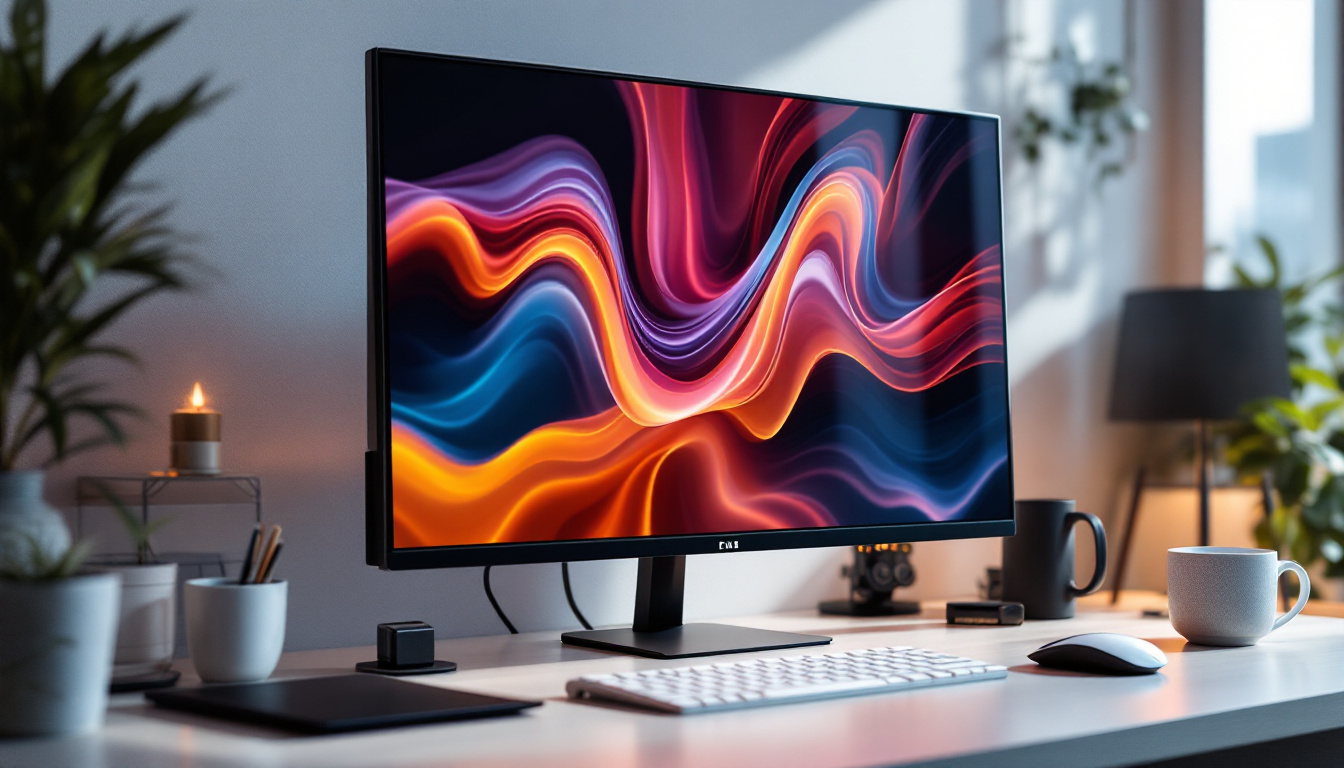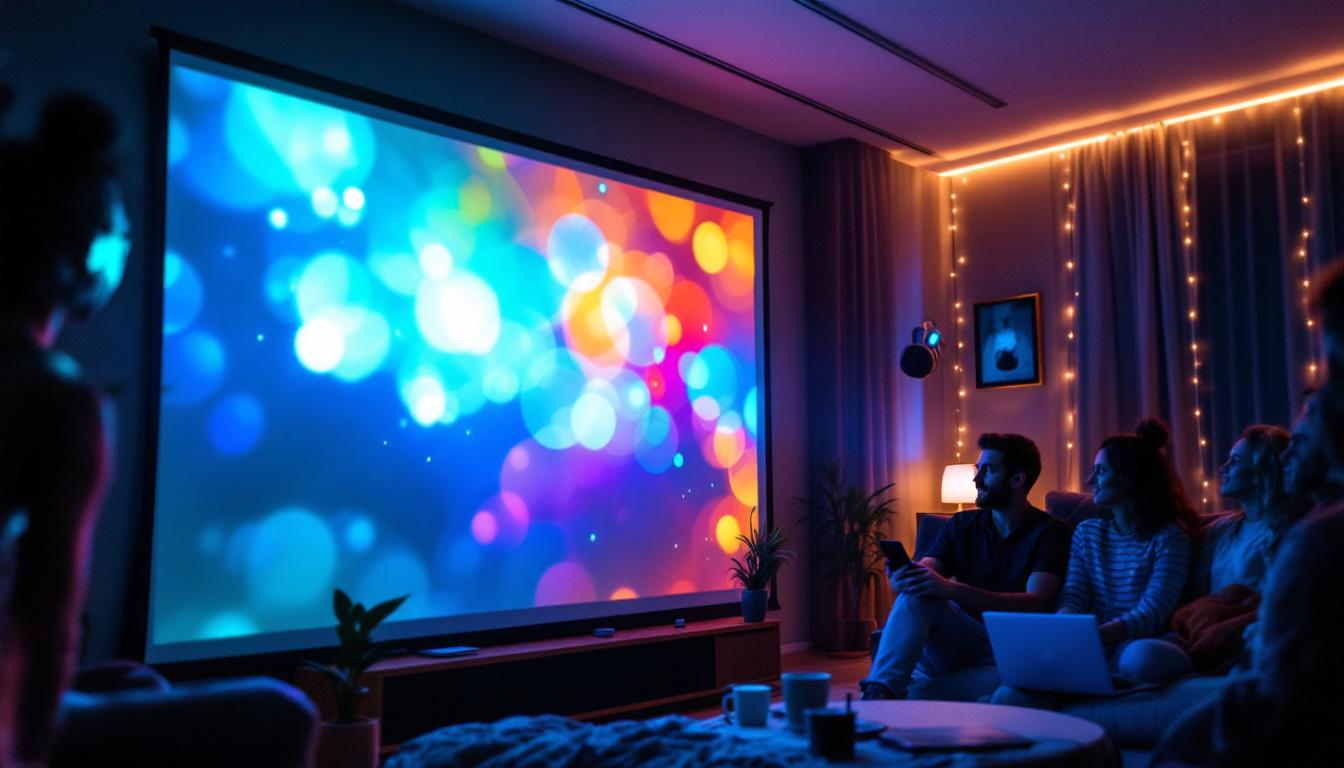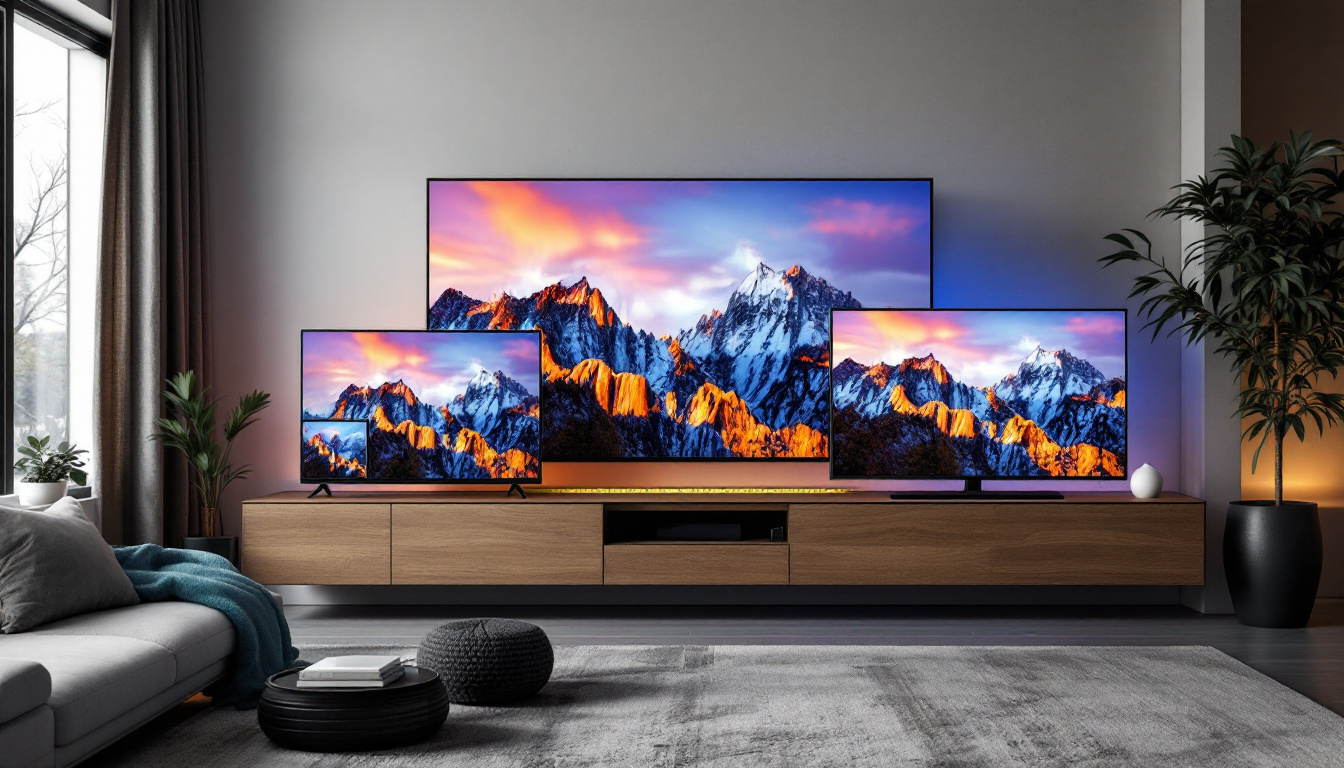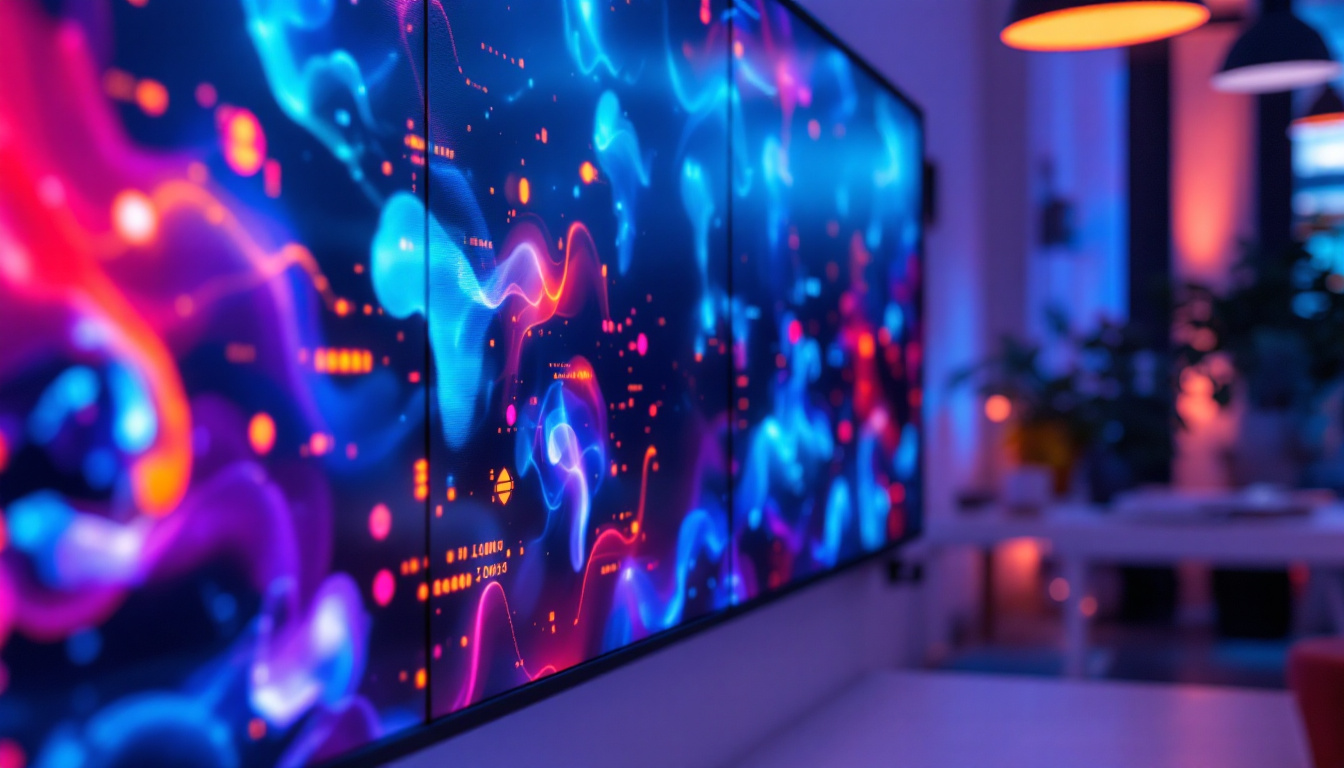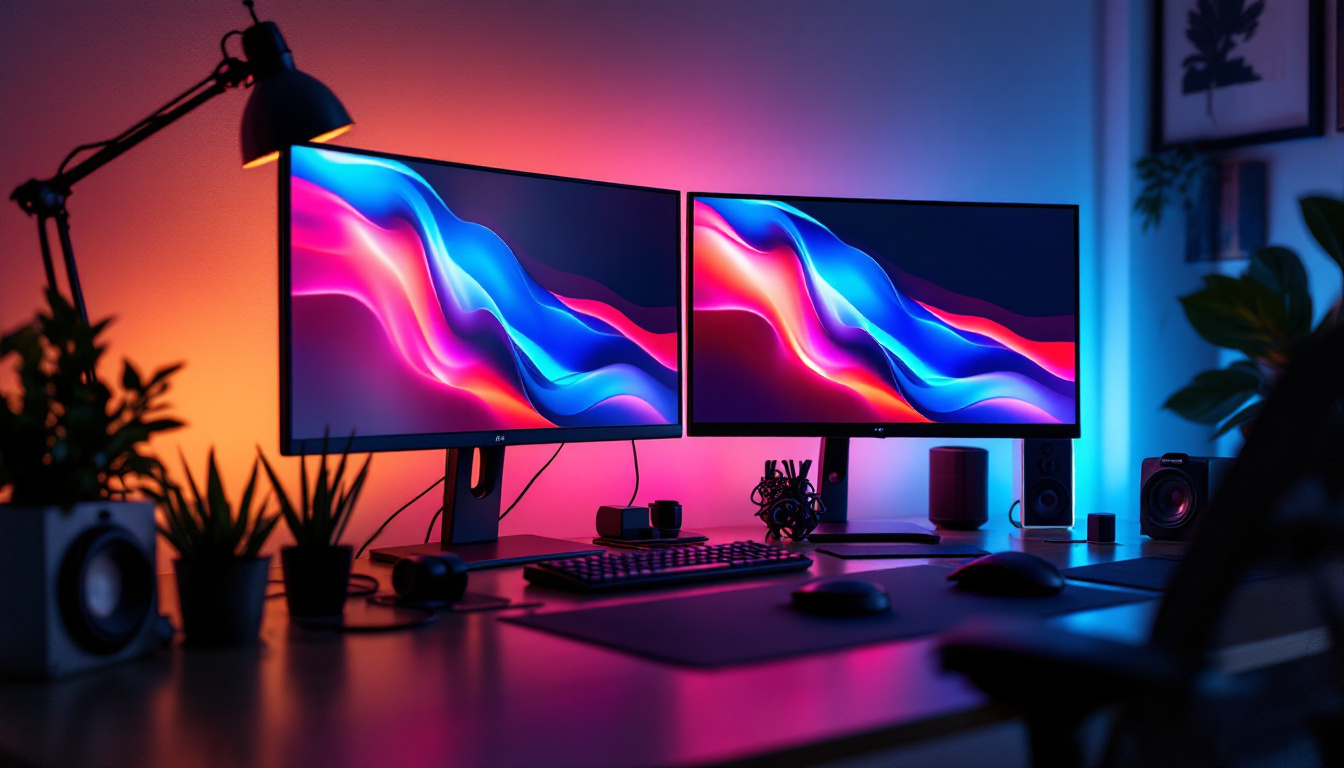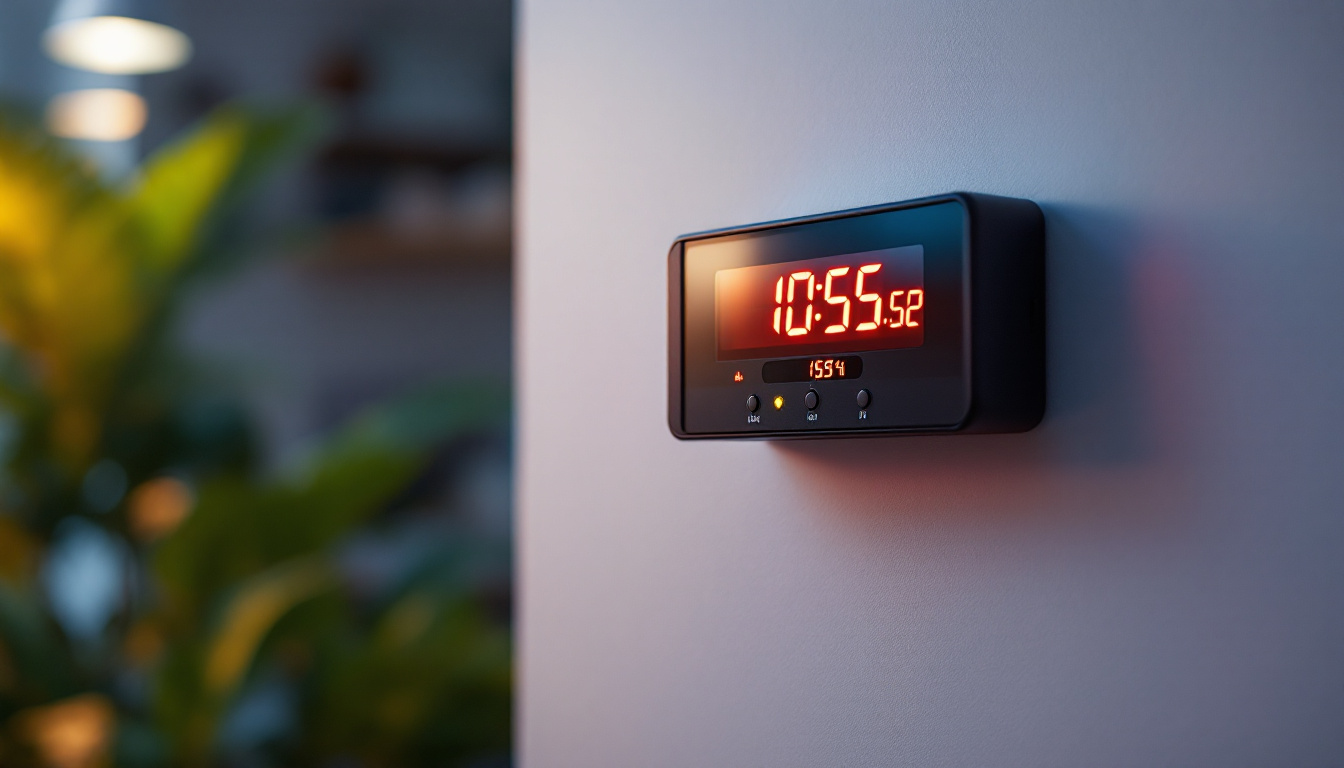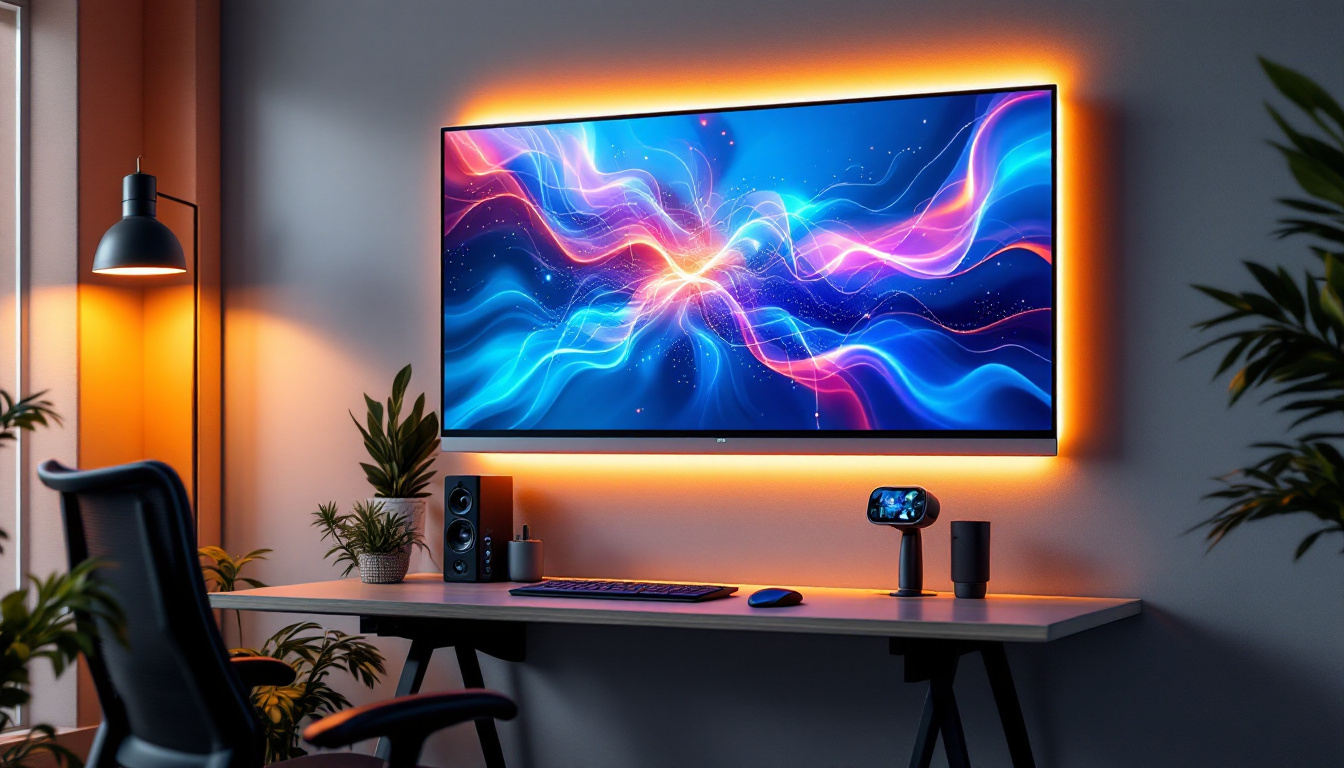In the rapidly evolving world of technology, the demand for versatile and efficient display solutions has never been higher. Mountable monitors, especially those featuring LED display technology, have emerged as a popular choice for both personal and professional environments. This article delves into the intricacies of mountable monitors, exploring their benefits, applications, and the technology behind LED displays.
Understanding LED Display Technology
LED, or Light Emitting Diode, technology has transformed the way visual information is presented. Unlike traditional LCD screens, which rely on fluorescent backlighting, LED displays utilize a matrix of tiny light-emitting diodes. This fundamental difference results in enhanced brightness, contrast, and energy efficiency.
How LED Displays Work
At the core of LED display technology is the diode itself, a semiconductor device that emits light when an electric current passes through it. In a typical LED display, millions of these diodes are arranged in a grid format. Each diode can be individually controlled to produce various colors, which allows for the creation of vibrant images and videos.
There are two primary types of LED displays: direct-lit and edge-lit. Direct-lit displays have LEDs positioned directly behind the screen, providing uniform brightness across the entire display. In contrast, edge-lit displays have LEDs positioned along the edges, which can lead to thinner designs but may result in uneven brightness in certain scenarios.
Advantages of LED Displays
LED displays offer numerous advantages over traditional display technologies. One of the most significant benefits is their energy efficiency. LED technology consumes less power, which not only reduces electricity bills but also contributes to a smaller carbon footprint.
Additionally, LED displays are known for their exceptional color accuracy and brightness. They can achieve higher contrast ratios, resulting in deeper blacks and more vivid colors. This makes them ideal for a variety of applications, from digital signage to home entertainment systems.
Features of Mountable Monitors
Mountable monitors are designed for flexibility and adaptability. Their ability to be mounted on walls or other surfaces makes them a preferred choice in various settings, including offices, classrooms, and homes. Several features make these monitors stand out in the market.
Space-Saving Design
One of the primary advantages of mountable monitors is their ability to save space. By eliminating the need for bulky stands, these monitors can be easily affixed to walls, freeing up valuable desk space. This is particularly beneficial in environments where space is at a premium, such as small offices or apartments.
Moreover, the sleek design of many mountable monitors contributes to a modern aesthetic, enhancing the overall look of the space. Whether used in a corporate boardroom or a cozy living room, these monitors can seamlessly blend into the environment.
Versatile Mounting Options
Mountable monitors come with various mounting options, allowing users to choose the best configuration for their needs. VESA (Video Electronics Standards Association) compatibility is a common feature, enabling monitors to be mounted on standard brackets and arms. This versatility means that users can easily adjust the height, angle, and orientation of the monitor for optimal viewing.
Additionally, some mountable monitors offer swivel and tilt capabilities, allowing for even greater flexibility. This is particularly useful in collaborative environments where multiple users may need to view the screen from different angles.
Enhanced Connectivity
Modern mountable monitors often come equipped with a range of connectivity options, making them compatible with various devices. HDMI, DisplayPort, USB-C, and even wireless connectivity options are commonly available. This versatility ensures that users can easily connect their laptops, tablets, or other devices without hassle.
Furthermore, many mountable monitors now include built-in speakers and microphones, making them suitable for video conferencing and multimedia presentations. This all-in-one functionality enhances the user experience, reducing the need for additional equipment.
Applications of Mountable Monitors
The versatility of mountable monitors makes them suitable for a wide range of applications across different industries. From education to healthcare, these displays are being utilized in innovative ways.
Corporate Environments
In corporate settings, mountable monitors are often used for presentations, meetings, and collaborative work. Their ability to be mounted on walls allows for larger displays that can be easily viewed by multiple participants. This is particularly advantageous during brainstorming sessions or strategy meetings, where visual aids can enhance communication.
Moreover, many companies are adopting digital signage solutions, using mountable monitors to display important information, announcements, or advertisements in common areas. This not only improves communication within the organization but also enhances the overall branding experience for visitors.
Educational Institutions
In educational environments, mountable monitors are becoming increasingly popular. They can be used in classrooms to display lectures, videos, and interactive content. This technology fosters a more engaging learning experience, allowing educators to incorporate multimedia elements into their teaching methods.
Additionally, mountable monitors can facilitate remote learning by providing a clear and accessible platform for video conferencing and online classes. This adaptability is crucial in today’s educational landscape, where hybrid learning models are becoming the norm.
Healthcare Settings
The healthcare industry also benefits from the use of mountable monitors. In hospitals and clinics, these displays can be used to show patient information, treatment plans, and educational materials. Their space-saving design is particularly useful in medical settings, where every square foot counts.
Furthermore, mountable monitors can enhance telemedicine services, allowing healthcare providers to conduct virtual consultations with patients. This capability not only improves accessibility but also streamlines the healthcare process.
Choosing the Right Mountable Monitor
When selecting a mountable monitor, several factors should be considered to ensure it meets specific needs and requirements. Understanding these factors can help users make informed decisions and maximize their investment.
Screen Size and Resolution
The size of the monitor is one of the most critical factors to consider. Larger screens are generally more effective for presentations and collaborative work, while smaller screens may be suitable for personal use or limited spaces. Additionally, resolution plays a significant role in image quality. Higher resolutions, such as 4K, provide sharper images and are ideal for detailed graphics and videos.
It’s essential to evaluate the intended use of the monitor. For instance, a corporate environment may benefit from a larger, high-resolution display for presentations, while a home user may prioritize a smaller, more compact design for casual viewing.
Refresh Rate and Response Time
For users who plan to use their mountable monitor for gaming or fast-paced video content, refresh rate and response time are crucial specifications. A higher refresh rate results in smoother motion, while a lower response time minimizes blurring during fast action scenes. These features are particularly important for gamers and multimedia enthusiasts.
Conversely, for general office work or educational purposes, standard refresh rates and response times may suffice. Understanding the specific use case can help users prioritize these features effectively.
Budget Considerations
Budget is another critical factor when choosing a mountable monitor. Prices can vary significantly based on features, brand, and specifications. It’s essential to establish a budget that aligns with the intended use and desired features.
While it may be tempting to opt for the cheapest option, investing in a quality mountable monitor can lead to better performance and longevity. Users should consider the long-term value of their purchase rather than solely focusing on the initial cost.
Future Trends in Mountable Monitors
The landscape of mountable monitors is continually evolving, with advancements in technology paving the way for exciting new features and capabilities. As the demand for high-quality displays grows, several trends are emerging in the market.
Smart Technology Integration
One of the most significant trends is the integration of smart technology into mountable monitors. Many manufacturers are now incorporating features such as built-in streaming capabilities, voice control, and smart home compatibility. This integration allows users to access content and control their displays more conveniently.
As smart technology continues to advance, it is likely that mountable monitors will become even more multifunctional, serving as central hubs for entertainment, communication, and productivity.
Enhanced Connectivity and Collaboration Tools
With the rise of remote work and collaboration, mountable monitors are increasingly being designed with enhanced connectivity options. Features such as wireless screen sharing, integrated video conferencing tools, and improved compatibility with various devices are becoming standard.
This trend reflects the growing need for seamless collaboration in both corporate and educational settings, making it easier for teams to work together regardless of their physical location.
Sustainability and Eco-Friendly Designs
As environmental concerns continue to gain prominence, many manufacturers are focusing on sustainability in their product designs. This includes using eco-friendly materials, reducing energy consumption, and implementing recycling programs for old monitors.
Consumers are becoming more conscious of their environmental impact, and companies that prioritize sustainability are likely to resonate with this growing demographic.
Conclusion
Mountable monitors with LED display technology offer a versatile and efficient solution for various applications, from corporate environments to educational institutions and healthcare settings. Their space-saving design, enhanced connectivity, and vibrant display capabilities make them an attractive option for users seeking to maximize their visual experience.
As technology continues to advance, the future of mountable monitors looks promising, with trends pointing towards smarter, more sustainable, and collaborative solutions. By understanding the features, applications, and emerging trends, users can make informed decisions when selecting the right mountable monitor for their needs.
In a world where visual communication is paramount, investing in a quality mountable monitor can significantly enhance productivity, engagement, and overall experience. Whether for work or leisure, these displays are set to play a crucial role in shaping the future of how we interact with technology.
Discover LumenMatrix’s Advanced LED Display Solutions
Ready to elevate your visual experience with cutting-edge technology? LumenMatrix, a pioneer in LED display innovation, offers a comprehensive range of LED display modules designed to transform any environment. From captivating Indoor and Outdoor LED Wall Displays to dynamic Vehicle and Sports LED Displays, our solutions are tailored to meet your unique needs. Embrace the future of visual communication with our All-in-One and Custom LED Displays, and see how our Transparent and Floor LED options can redefine your space. Don’t miss out on the opportunity to enhance engagement and brand visibility. Check out LumenMatrix LED Display Solutions today and step into a world of vibrant, impactful displays.

